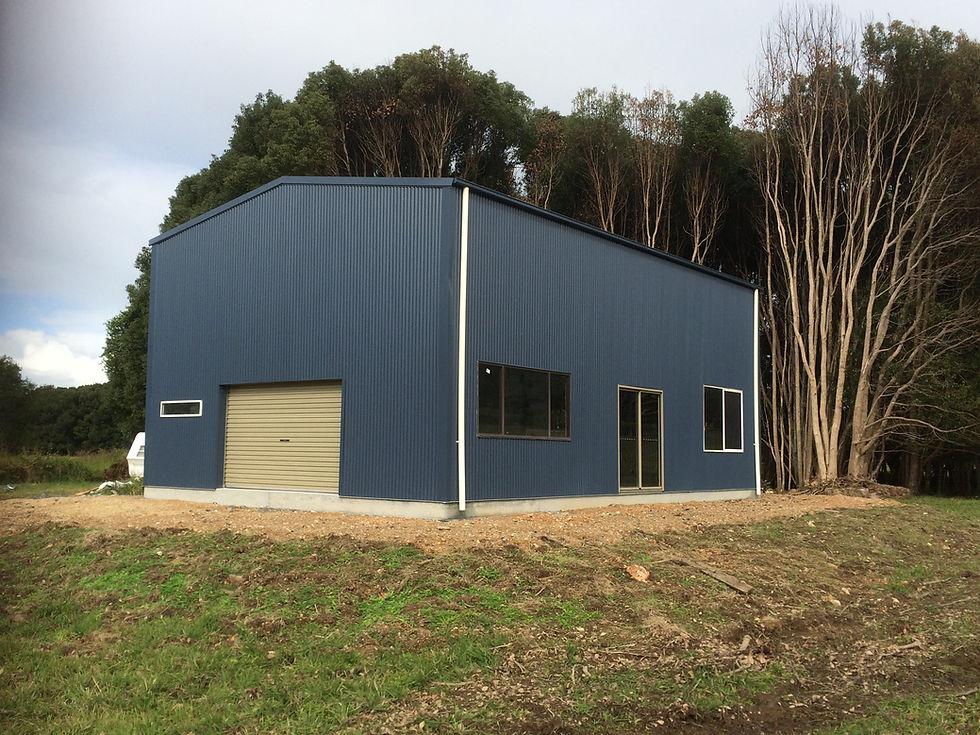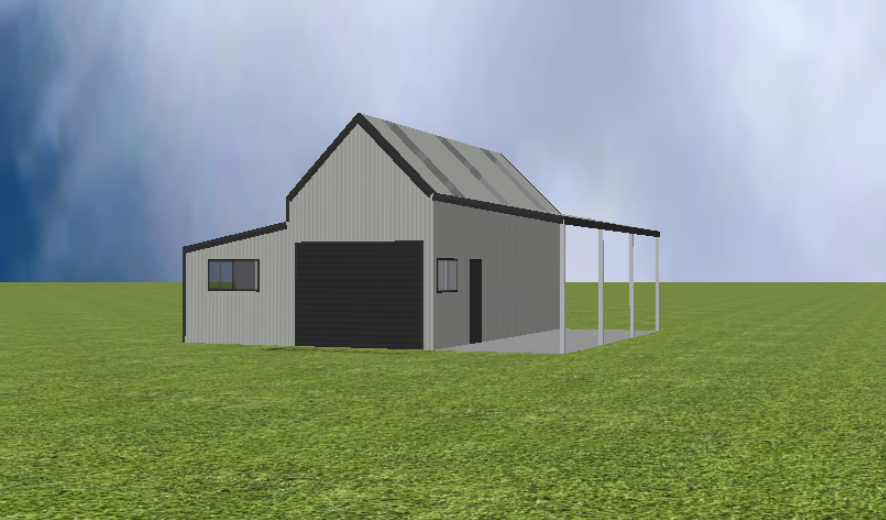Innovative Design Ideas for Building Efficient Farm Sheds
- Nivi Watson

- May 15
- 4 min read
Only to have you been craving a new farm shed but are generally Sommers aping the literal lower expectations of a cookie-cut structure that will not blend with your aesthetic or environmental values? Do you ever stop and wonder: Can a barn or shed really be functional and sustainably designed? These are the questions that would make anyone seem daunting but fear not; we are here to inspire you with dazzling test ideas to bright up your eco-garden sanctuary.
From innovative materials to energy-efficient design techniques, the green movement literally redefines how we construct our farm buildings. This blog post will explore these groundbreaking changes and introduce you to both the practical and aesthetic advantages of sustainable shed design.
Read on to create awareness about how the modern farm sheds design is not only elevating utility, but also efficiency and harmonizing them visually without sacrificing health for our planet. Starting this journey, consider joining The Design Files - a trusted source of home improvement and architecture solutions.

Why Shift to Sustainable Farm Sheds?
Moving to different eco-friendly architecture is much more than a trend in design; it's one of those conversions that should lead to environmental responsibility. Materials and methods of construction with traditional farm sheds have not fulfilled the criteria for eco-friendliness. Our effort aims at promoting changes in the green direction without detracting from the quality of elements of functionality or aesthetics.
Green building practices are meant to reduce waste, energy consumption, and the incorporation of renewable resources. With the addition of an eco-friendly shed, you significantly minimize the carbon footprint while enjoying a healthy and comfortable space that lives and breathes earth-friendly ethos.
Sustainability is not a synonym for austerity. Rather, it strikes a balance of design elements to leave you with a functional yet forma-minimum-hitting eye-catching structure, echoing with contemporary aesthetic trends.
Material Innovations for Eco-True Farm Sheds
One of the interesting aspects of green design is the materials that are used, stressing the sources that provide them or the methods of production and lifecycle. Recycled steel, salvaged wood and eco-concrete are the best possible options for structural elements.
Insulation, for example is now proving quite efficient in materials use, as it includes sheep's wool and cellulose as some preferred materials considering both durability and outstanding properties in insulation.
Typically, sustainable materials also do improve the indoor environment quality, like reducing chemicals often emitted from synthetics.
Incorporating Renewable Energy Sources
Renewable energy systems can be integrated into your farm sheds for increased energy efficiency. Solar panel systems, for example, can be integrated into the roofing system such that having your shed is equivalent to having a little ecosystem that produces its own electricity.
Solar tubes, too, are devices that even allow natural sunlight to flow in thereby reducing dependency on artificial light for the time being.
Very few people think about using wind energy to charge up their shed, but especially in wind-rich areas, this is also an option.
Prioritize Water Conservation
Another very important aspect of eco-design in sustainable approaches is using water-saving practices in your farm sheds designs. Such practices can be adventitious water buffer plants, or even harvested rainwater to make multi-purpose uses possible.

Use efficient appliances and fixtures in the home. Also consider a greywater system for reusing water in gardening or cleaning.
The water adoption above saves the earth and goes beyond to reduce your utility bills in water.
Integrating Landscape and Building
Zero-energy designs are perfected at harmonizing naturally with the surrounding topography aside from minimizing their consumption of resources. That is, the shed should fit well in the environment with minimum disturbances to the existing ecosystem.
This can be achieved by using local, natural materials and employing construction techniques that minimize impact on the environment.
Integrate, for example, such features as green roofs or living walls which host local plant species while improving the insulation of your shed.
Advantages and Disadvantages of Sustainable Farm Sheds
While sustainability sheds hold great promises, several challenges must also be considered when weighing these advantages. Initial costs of certain green materials and technologies could be prohibitively expensive, local sustainable fibres concrete, and even constraints placed on design by traditional forms could act as barriers.
Nonetheless, the negatives are eclipsed by the long-term positives since eco-friendly sheds prove cost-effective over time through lower operating costs. To add on, one gains an invaluable feel-good factor emanating from contributing to the betterment of our planet.
In addition, as more traditional approaches become better, more options featuring aesthetic appeal, functionality, and sustainability are forthcoming.
Conclusion: Green is the New Normal
These schemes are indeed innovative among the most gigantic promises that would have had the future of farm sheds construction. By going in for such friendly options, you aren't just wooding a hut; you're establishing a sustainable future.
So, as green design inculcates itself into every nook and corner of our lives, why should farm sheds be left behind? It is one of those moments when it is fit to go greener. Your stylish, efficient shed that respects our wonderful planet awaits.
But before you go any further, remember that every little green movement is a huge step inwards into making your home and the whole world sustainable. Take that first step towards establishing your mark on the green frontier and go forth with an eco-friendly farm shed, marrying utility with affordability and beauty but most importantly, a warranted respect for our beautiful planet.



Comments